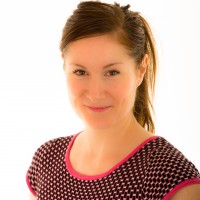
From 1 January, Dijkstra took over from Mike Jones as managing director Intermediaries for Lloyds Banking Group looking after the Halifax, BM Solutions and Scottish Widows brands.
But the landscape couldn’t be more different to the one Jones had known. Inside of 12 months, the mortgage industry, used to working in busy offices, meeting at events, and driving miles to see clients and brokers moved online. The bank’s staff were forced to work from home and new mortgage lending for the entire market fell 10 per cent.
And as the pandemic brought some sectors like travel and hospitality to a standstill, other sectors which were able to transfer online have thrived. But that polarisation has made assessing mortgage risk much harder than it previously was before.
“The impact the pandemic has had on borrowers’ livelihoods and earnings has added an extra layer of complexity to lending when you also have to take into account furlough schemes and payment holidays, for example,” says Dijkstra “And because it is a health crisis and not a financial crisis, some sectors have been more heavily impacted than others.”
Combined with the reality that banks too had to turn their staff into home workers and move online meant Lloyds was juggling operational challenges at the same time as adapting its criteria to reflect new risks. More underwriters were recruited to deal with complex borrower circumstances.
“It’s been tough for us as well, but we have bounced back quickly to delivering the service and expectations that brokers have,” Dijkstra says.
Lloyds Banking Group will not release its new lending figures, but in the context of the market’s 10 per cent drop in lending, Dijkstra says the bank has “done very well”.
“As an industry we should reflect back on last year and think, wow we did all of that. We did all come through it and we worked together; valuers, estate agents, risk people, everyone.
“Everybody was flexible. It’s something to be proud of as industry, we managed to serve customers when the market closed and then when it opened back up again.”
The stamp duty holiday
Stamp duty is currently still driving the mortgage market forward at top speed, but Dijkstra has her eye on plenty of market-supporting initiatives that will keep lending buoyant when the scheme begins to taper off in June.
Her key focuses for 2021 are supporting first-time buyers, building momentum behind their equity release products and addressing the operational challenges and new ways of working brought about by the pandemic.
From mid-April, 95 per cent deals will be back on the shelves and Lloyds is one of five lenders that have committed to offering the mortgages.
“One of the biggest difficulties for first-time buyers is getting a deposit and 95 per cent is a big way of supporting them.” Dijkstra wouldn’t say if Lloyds had any direct involvement with bringing about the government-backed mortgage guarantee scheme that was announced in the Chancellor’s Budget. But she did say the bank lobbies government on behalf of the mortgage and housing market.
Higher LTV lending
The market is hoping that further support for first-time buyers will come in the form of higher loan to income multiples. This will mean those who need help the most are able to make use of the 95 per cent deals. Dijkstra wouldn’t confirm if enhanced multiples would be made available, except to say criteria was kept under constant review. Rates for the range are also still under wraps.
Another product range that the market can expect to see more of this year, says Dijkstra, is equity release mortgages through the Scottish Widows brand.
“There is a clear customer need here. People want to support their children on to the housing ladder, they are equity rich but cash poor. It’s a really good opportunity area not just for us, but for brokers too. As their customers get older they need to be able to help with ‘at retirement’ borrowing options.”
The plan is to scale up their equity release operation this year, using their business development managers to spread the word through brokers. Dijkstra is determined to grow the distribution of equity release mortgages in the mainstream mortgage market, and says it is currently too narrow and reliant on “two main distributors”.
“Our reasons for entering the market are to address customer and regulatory concerns and offer the flexibility that’s being asked for.
“But you have to be in the market to support that change. I think about it terms of swimming, you can read books about it and watch people doing it but unless you are in the water and you start to swim, you won’t be able to do it and you will drown.”
Finding balance
A huge operational challenge for Dijkstra is to decide which parts of Lloyds’ lockdown working life will remain, and which will return to pre-pandemic norms and how the bank interacts with brokers is a major focus.
With the vaccine roll out in progress, her team has started to look at new ways of working. They want to find how the way in which customers and brokers want to interact with the bank has changed bearing in mind the national mood that a work/life balance is more of an expectation now rather than an aspiration. Behind the scenes they are already experimenting with new approaches.
Dijkstra says the bank is already reviewing the number of offices it has and whether they will still be needed and she is sure other companies in the mortgage sector will be doing the same.
“We have a brilliant opportunity to redesign how we work and to do it from everyone’s perspective, the broker, the BDM, the national account manager, networks and mortgage clubs.”
One role destined for long-term change is the BDM.
“When I practically think about BDMs, do I think that we will all jump back in the car and get on the road, no. There will definitely be a hybrid [solution].”
She says it’s difficult to design how the job role will look on paper so it will be a case of trying new ways and finding out what works best.
For now, Dijkstra and the intermediary team will be working full throttle to support brokers and borrowers as the stamp duty extension prolongs the mayhem for a few more months. But as the bank crosses the half year line, mortgage brokers can expect to see much change across Lloyds’ trio of brands.
















